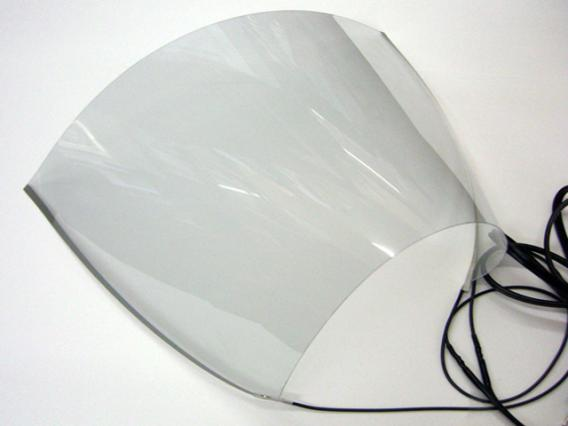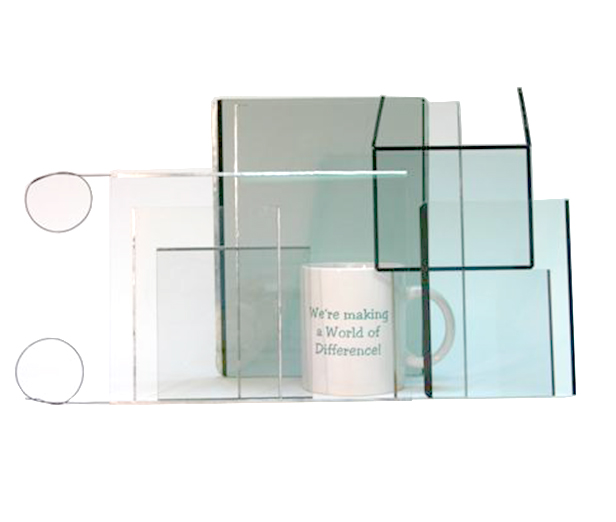Transparent heaters have moved into more devices in recent years. More companies want a thin, clear, and stable heating solution that can work on curved surfaces or enclosed spaces. The main keyword buyers search before placing a project order is simple: are transparent heaters flexible? The answer depends on the material. Some versions bend with ease. Others stay rigid and are used only on flat surfaces.
This article walks you through the real differences so you can choose the correct heater for your design, budget, and environmental needs.

A transparent heater is a thin film or coated layer that warms a surface while staying clear. It delivers heat without blocking the line of sight, so it works well on glass, display covers, and view windows. These heaters rely on conductive materials such as ITO, metal mesh, silver nanowires, or graphene. Each material gives a different mix of clarity, heat output, durability, and flexibility.
The most common types include:
All of these can be made into custom shapes. Some can bend or wrap along curved housings, while others must stay flat. The base substrate decides most of the flexibility.
Yes, transparent heaters can be flexible, but it depends on the material used. Some versions bend very well, while others stay completely rigid.
Flexible Types:
These materials are made on soft films, so they can curve, wrap, or follow a shaped surface without cracking. They are used for HMI panels, curved covers, camera housings, drones, and fog-free windows.
Non-Flexible Types:
This type stays rigid because the glass substrate cannot bend. It is only used on flat surfaces where high optical clarity and high temperature stability are required.

Flexibility depends on several design factors. A heater that looks similar on paper may behave differently in real projects.
1. Substrate Material
The substrate controls the mechanical behavior.
PET strikes the best balance between clarity, bending ability, and cost.
2. Conductor Type
Some materials crack under stress. Others stay intact.
3. Layer Thickness
Thin layers bend better. Thicker layers resist bending.
4. Bending Radius
Each heater has a minimum bending radius. If you fold it too tight, the conductive layer may fail. PET-based heaters often support 3–10 mm radius depending on thickness.
5. Operating Temperature
Higher temperatures create more stress. Some heaters lose flexibility when exposed to repeated heat cycles.
All five factors should be reviewed when you choose a heater for a curved device or a housing with tight mounting space.
Flexible transparent heaters work best when the installation space is curved or when the device vibrates often. They help keep surfaces clear without adding weight or stress.
Common scenarios include:
Devices with complex shapes gain more stability when a heater can bend instead of resisting the curve.

Flexible transparent heaters bring several benefits to modern equipment design:
These points explain why engineers prefer PET-based or nanowire heaters for new devices.
The limitations are small but important for proper selection:
These issues are manageable with quality materials and controlled manufacturing.
The right choice depends on a mix of mechanical, optical, and thermal requirements. A clear approach helps you avoid mistakes.
Key steps for selection:
Following these steps keeps the heater stable for long cycles.
Below are typical data ranges used in engineering plans. The final values may vary based on shape, size, and sheet resistance.
| Specification | Typical Range |
| Transparency | 88–92% |
| Sheet Resistance | 10–150 Ω/sq |
| Operating Temp | -40°C to 80°C |
| Thickness | 0.1–0.5 mm |
| Voltage | 3.7 V to 48 V |
| Optical Haze | <1% |
| Power Density | 0.1–1.0 W/cm² |
Danyu Electronics supports a wide range of transparent heating solutions for industrial and commercial equipment. The company provides custom shapes, holes, sharp curves, and complex outlines that match real installation needs. Engineers often choose Danyu because the process is stable from design to prototype.
Key strengths include:
Danyu Electronics also works with nanowire and graphene heater options for more advanced devices. This helps teams build next-generation products without long lead times.
1. Can transparent heaters bend after installation?
Yes. Flexible PET and nanowire heaters can bend to small radii. They should not be folded sharply, but they tolerate smooth curves.
2. Do flexible heaters turn yellow over time?
High-quality PET with UV protection stays clear for many years. Lower-grade films may yellow, so selection matters.
3. Is ITO flexible?
ITO itself is brittle. When it is coated on PET, the whole heater becomes flexible. When it is on glass, it stays rigid.
4. Can flexible transparent heaters be used outdoors?
Yes. They work in outdoor sensors, cameras, and monitoring units. You must choose proper sealing and UV-rated materials.
5. How thin can a flexible transparent heater be?
Most flexible heaters range from 0.1 mm to 0.5 mm. Custom versions can be thinner for lightweight devices.
Simply drop your email or phone number in the contact form, and we'll promptly reply you shortly.